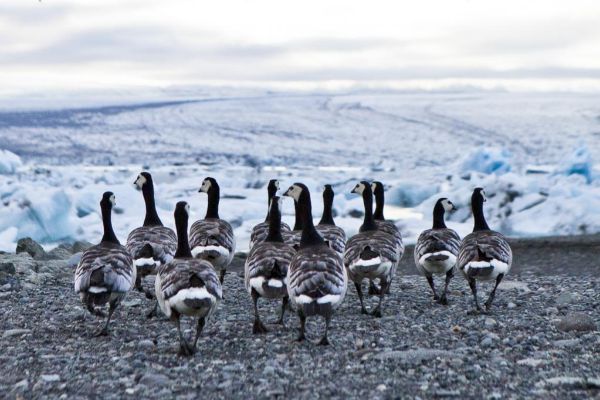Some years ago we visited the Athabasca Glacier, in the Rocky Mountains of Canada. It is one of the easiest glaciers to see because it is next to Route 93, known as "the road of the ice fields." There is a great interpretation center from where you can see the tongue of the glacier about two kilometers away. The ice recedes between 10 and 25 meters every summer, according to a booklet of Geovistas. In 1844, when the Little Ice Age reached its climax and the planet began to warm up , the ice reached the edge of the road.
Athabasca is one of the glaciers that are dying in the world. Last week the Okjökull funeral was held, "the first Icelandic glacier that disappears in times of climate change," said Iceland's Prime Minister Katrín Jakobsdóttir. The Ok lived 700 years on the shore of a volcano. Seven hundred years - a lifetime for a glacier - but not an eternity as some would have us believe.
One of the things that caught my attention in Athabasca was that the guide dropped at the end of the visit, as if it didn't matter, that when the ice was removed, arrows, baskets, pots and various utensils were exposed. That means there were humans there and, if they didn't die there, they abandoned their belongings and emigrated quickly. Similar discoveries have been recorded by melting Norwegian, Swiss glaciers (there is Ötzi, Similaun's man) and other Canadians, such as the formidable discovery of a frozen man far further north of Athabasca, in 1999, which was baptized as Kwäday Dän Ts 'ìnchi in Tutchone language (its translation would be "the person of a long time found").
This evidence would indicate that Humanity has lived in the past on a warmer planet than we knew . At least, the glaciers were less splendid. Its melting has given way to a discipline, Glacier Archeology, a term coined by Oddmundn Fabregd in 1968, when the warming did not attract as much controversy as now. It is estimated that the Little Ice Age meant a cooling of one degree celsius and ended the so-called Medieval Warm, a period of terrestrial warming between the years 800 to 1300.
The Intergovernmental Group of Experts on Climate Change criticized the use of the terms Medieval Warm or Small Ice Age in 2001 because they are not very descriptive. But the findings of glacial archeology have increased our knowledge of human life at the extremes of the physical world.
According to the criteria of The Trust Project
Know more- Climate change
- Columnists
Account adjustment Climatic emergency
Impression UNU: a sustainable diet
Terral blows Cold decisions

